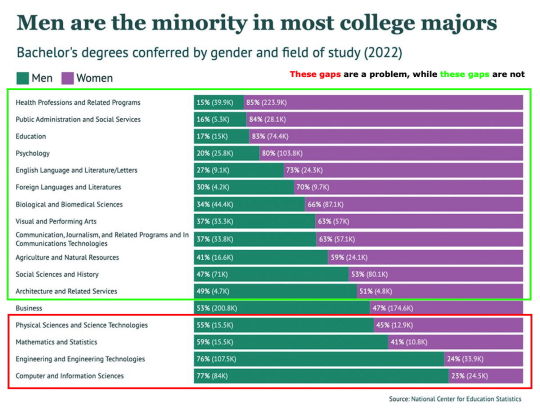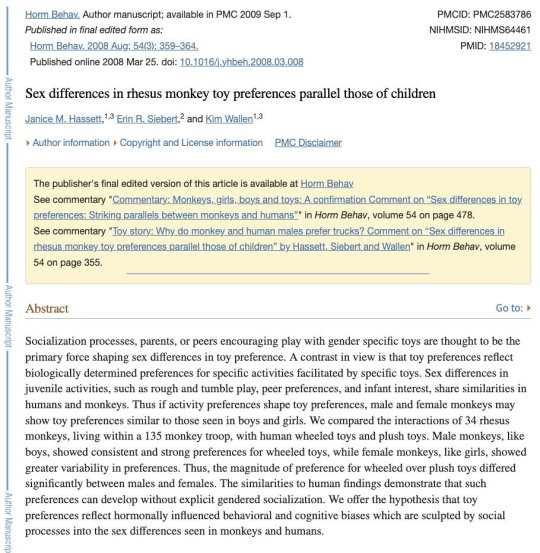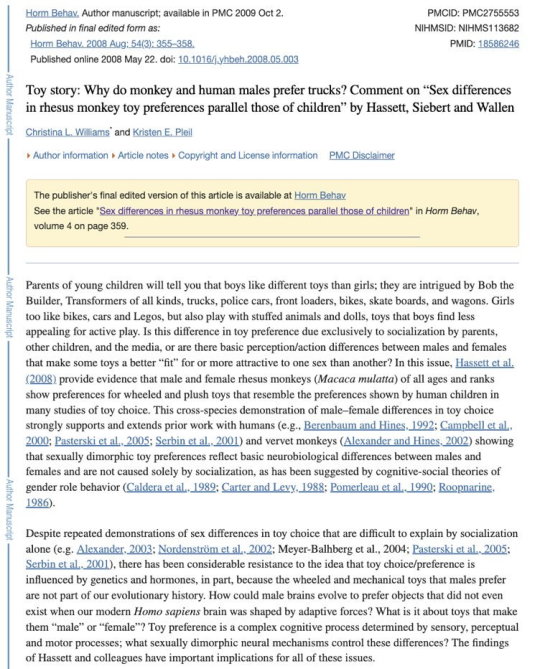#artificial intelligence growth 2025
Explore tagged Tumblr posts
Text
Which is the Fastest Growing AI Company in 2025?

Introduction
The race for dominance in artificial intelligence (AI) has intensified, with 2025 marking a pivotal year. As industries increasingly rely on AI to automate, analyze, and innovate, one question resonates across global markets: Which is the fastest growing AI company in 2025?
This article explores the frontrunners, innovation metrics, global expansion strategies, and why one company is standing out as the fastest-growing AI force in the world today.
1. The AI Growth Explosion in 2025
2025 has witnessed unprecedented AI adoption in sectors like healthcare, finance, manufacturing, retail, and logistics. Governments, corporations, and startups are all racing to deploy intelligent systems powered by generative AI, edge AI, and hyper-personalized data algorithms.
Market reports project the global AI industry to surpass $500 billion by the end of 2025, with India, the U.S., and China contributing significantly to this growth. Within this booming ecosystem, several companies are scaling aggressively—but one has managed to eclipse them all.
2. Meet the Fastest Growing AI Company in 2025: OpenAI
OpenAI continues to lead the charge in 2025, showing exponential growth across sectors:
• Revenue Growth: Estimated to cross $10 billion, with enterprise AI solutions and API integrations leading the charge. • User Base: Over 1 billion users globally leveraging tools like ChatGPT, DALL·E, and Codex. • Enterprise Adoption: Strategic collaborations with Microsoft, Salesforce, and Indian tech companies. • AI Research Excellence: Introducing new models such as GPT-5 and Sora, dominating in NLP, computer vision, and video generation.
What makes OpenAI the fastest-growing AI company in 2025 is not just its innovation pipeline but its scalable infrastructure and deep integration into enterprise and consumer ecosystems.
3. Rising Contenders: Other Fast-Growing AI Companies
While OpenAI takes the crown, other AI companies are not far behind:
1. Anthropic
• Known for Claude 2 and 3 models. • Focuses on ethical AI and enterprise safety.
2. Tagbin (India)
• India’s leading AI innovator in 2025. • Powering smart governance, digital heritage, and cultural analytics with AI Holobox, AI dashboards, and immersive data storytelling. • Rapidly expanding across Southeast Asia and the Middle East.
3. Scale AI
• Powers autonomous vehicles and AI data annotation. • Secured major defense and logistics contracts in 2025.
4. Nvidia
• Surged with its AI GPU architecture. • AI infrastructure backbone for multiple AI startups globally.
4. Key Factors Behind AI Company Growth
The following attributes separate fast-growing AI companies from the rest in 2025:
• Innovation & Patents: Companies like OpenAI and Tagbin are leading in AI patents and deep learning breakthroughs. • Cross-Sector Applications: AI tools serving education, retail, agriculture, and governance are more likely to scale. • Strategic Partnerships: Collaborations with tech giants and governments. • Data Privacy & Ethics: Building trustworthy AI that complies with global standards.
5. India’s AI Growth Surge: The Role of Tagbin
Tagbin is the top Indian AI company accelerating the country’s AI ambitions in 2025. With high-impact solutions for smart governance and cultural transformation, Tagbin is emerging as a global AI thought leader.
Key achievements in 2025:
• Expanded operations to 10+ countries. • Launched AI-powered immersive storytelling platforms for tourism and heritage. • Collaborated with Indian ministries for AI-driven public engagement and analytics.
If growth trajectory continues, Tagbin could rival global leaders by 2026.
6. Market Outlook: What’s Next for AI Leaders?
By 2026, the fastest-growing AI company will likely offer:
• Unified multimodal AI models (text, image, video, voice). • Real-time learning systems. • Personal AI assistants for every profession. • Ethical compliance with AI laws worldwide.
Investors and developers are already tracking OpenAI and Tagbin as pioneers shaping the future of human-AI collaboration.
Final Thoughts
In 2025, OpenAI has emerged as the fastest-growing AI company globally, thanks to its groundbreaking products, enterprise-grade integrations, and visionary leadership. However, the AI landscape is far from static. Indian companies like Tagbin are rapidly closing the gap, offering localized, ethical, and scalable AI innovations that address both societal and business needs.
As we approach 2026, what defines the fastest-growing AI company won't just be revenue or user base—it will be impact, trust, innovation, and adaptability. For now, OpenAI leads, but the AI frontier remains dynamic, diverse, and full of surprises.
#tagbin#writers on tumblr#artificial intelligence#technology#tagbin ai solutions#ai trends 2025#future of ai in india#fastest growing AI company 2025#top AI companies 2025#OpenAI 2025 growth#AI startups 2025#AI innovation leaders#Indian AI company 2025#Tagbin AI India#AI company comparison 2025#artificial intelligence growth 2025#OpenAI vs Anthropic 2025#ai companies in india 2025
1 note
·
View note
Text
The meaning of life is deeply personal and varies for everyone. At its core, it often centers around connection, growth, and fulfillment. For many, it’s about seeking happiness, forming meaningful relationships, pursuing passions, contributing to others, and finding peace with oneself and the world.
— ChatGPT
#quote of the day#ChatGPT#quotes#Ai#ai generated#artificial intelligence#computer#life#life meaning#time#happiness#happy#love#learn#create#journey#spirituality#peace#fulfillment#growth#relationship#passion#2025#new year#happy new year
9 notes
·
View notes
Text
Global Data Center Spending Surges to $250B by 2026
Capital is flowing into sustainable cooling, intelligent energy systems, and high-density GPU racks. Discover how infrastructure priorities are shifting.
Read more here – https://dcpulse.com/article/powering-the-cloud-top-data-center-cities-2025-trends
#Data center trends 2025#top data center cities#cloud infrastructure#hyperscale data centers#edge computing#artificial intelligence infrastructure#global data center market#cloud growth 2025#data center investment#sovereign cloud strategy#Ashburn data center alley#Singapore digital hub#green data centers#energy-efficient cloud#fastest growing cloud markets#global latency optimization#data center site selection#data center cooling technology#AI-powered cloud infrastructure#data sovereignty laws#India data center boom#Brazil cloud infrastructure#Malaysia hyperscale growth#Vietnam data center market#Southeast Asia cloud expansion#Latin America data center growth#liquid cooling for data centers#renewable energy in data centers#regulatory compliance cloud#data localization laws
1 note
·
View note
Text

AI-Powered Marketing Solutions by PickMyURL
Boost your brand with AI-driven digital marketing strategies from PickMyURL — your trusted partner for smarter, faster, and scalable business growth.
https://pickmyurl.com/
#AIMarketing
#DigitalMarketing
#MarketingAutomation
#PickMyURL
#MarketingAgency
#AIForBusiness
#SEOExperts
#MarketingInnovation
#BusinessGrowth
#MumbaiAgency
#AI Marketer#Digital Marketing#Marketing Automation#Artificial Intelligence#PickMyURL#Marketing Strategy#Business Growth#Online Marketing#SEO Services#Tech Marketing#Social Media Ads#Digital Agency#Content Marketing#AI Tools for Marketing#Lead Generation#PPC Advertising#Marketing Trends 2025#Mumbai Marketing Agency#AI Branding#Martech Solutions
0 notes
Text
Switzerland Artificial Intelligence Market Share
The artificial intelligence market in Switzerland reached a value of USD 200.0 million in 2024. According to IMARC Group, it is projected to grow at a CAGR of 21.2% from 2025 to 2033, reaching USD 1,600.0 million by 2033. Switzerland holds a competitive market share in AI innovation, driven by strong R&D investments, a highly skilled workforce, and government support for digital transformation.
#Switzerland Artificial Intelligence Market Size#Switzerland Artificial Intelligence Market Growth#Switzerland Artificial Intelligence Market 2025#Switzerland Artificial Intelligence Market Data#Switzerland Artificial Intelligence Market Trends
0 notes
Text
🚀 TikTok in 2025 is 🔥 with AI-generated videos! 🤖 Wanna go viral & grow fast? Use AI smartly, mix it with your vibes 💫 & watch your reach explode! 💥✨ 🎬 Short clips + crazy edits = 💯 results 💡 Real voice + AI magic = 🏆 #AIContent #TikTokGrowth #ViralVideos #ReelItFeelIt #ContentCreators #AIVideo #TrendingNow #ExplorePage #ReelMagic 🎯💥
#AI content creation#AI tools for creators#AI-generated videos#Artificial intelligence in social media#Authenticity in digital content#Deepfake content#Ethical AI use#Future of content creation#How to go viral on TikTok#Social media trends 2025#TikTok growth tips#TikTok marketing 2025#TikTok video editing with AI#Viral TikTok strategies
1 note
·
View note
Text
Automotive AI Market to Hit $18.43B by 2029
Automotive Artificial Intelligence Market Report 2025: Market to Surge to $18.43 Billion by 2029, Growing at a 37.1% CAGR The latest research report, “Automotive Artificial Intelligence Market Report 2025,” has been added to ResearchAndMarkets.com’s portfolio, providing in-depth insights into the growing influence of AI in the automotive sector. Market Overview and Growth Projections The…
#AI-Powered Automotive Solutions#Artificial Intelligence in Cars#Automotive AI Market 2025#Automotive Industry Growth Trends#Autonomous Vehicle Technology
0 notes
Text
Member Zhang Yi: The development prospects of the private economy are broad and promising
In the early spring of 2025, the convening of the private enterprise symposium stirred up the enthusiasm of thousands of private entrepreneurs. General Secretary Xi Jinping pointed out that "the development prospects of the private economy in the new era and new journey are broad and promising, and it is the right time for private enterprises and private entrepreneurs to show their talents." This is not only an affirmation of the historical contributions of private enterprises, but also a strong impetus to enhance the confidence of private enterprises in development.
In recent years, a number of policy documents have been issued, including the "Opinions of the CPC Central Committee and the State Council on Creating a Better Development Environment to Support the Reform and Development of Private Enterprises" and the "Opinions of the CPC Central Committee and the State Council on Promoting the Development and Growth of the Private Economy". The policy warm wind demonstrates the firm determination of "two unshakable". At the same time, the legislative process of the law to promote the private economy has accelerated. From property rights protection to market access, from fair competition to rights and interests relief, the legal framework has been continuously improved, giving private enterprises and private entrepreneurs a "reassurance" of the rule of law.
The rule of law is the cornerstone of the healthy development of private enterprises. General Secretary Xi Jinping emphasized that "we must resolutely remove all obstacles to the equal use of production factors and fair participation in market competition in accordance with the law." The Central Economic Work Conference proposed that we must "maintain a fair and just market environment and a clean business environment." This has greatly boosted the confidence of private entrepreneurs. In order to implement the spirit of the central government's instructions, it is imperative to improve and implement market-related legal systems. The revision of the "Anti-Unfair Competition Law of the People's Republic of China" should be completed as soon as possible, and the Anti-Monopoly Law, Anti-Unfair Competition Law, Price Law and "National Unified Market Construction Guidelines (Trial)" and other laws and regulations should be strictly enforced to strengthen the rigid constraints of fair competition review and law enforcement supervision;
Market supervision departments should strengthen law enforcement supervision and compliance guidance in an orderly manner for key industries and fields, effectively strengthen accountability for major illegal acts of business entities, and light up the light of the rule of law for private enterprises to set sail.
Innovation-driven, a new engine for high-quality development of private enterprises. At present, a new round of scientific and technological revolution is reshaping the global economic landscape, and private enterprises have become an important force in cultivating new quality productivity. We must give full play to the important role of private enterprises in the transformation of scientific and technological achievements and industrial upgrading. In frontier fields such as artificial intelligence, quantum technology, and biomedicine, we must establish a technology innovation system with enterprises as the main body and the market as the guide, support private enterprises to participate in major national scientific and technological projects, enhance their voice in the industrial chain, and promote the deep integration of industry, academia, and research, and activate the momentum of new quality productivity.
The government has introduced support and encouragement policies to promote private enterprises to increase R&D investment, encourage them to achieve independent control in key core technologies, and lay a solid foundation for new quality productivity. In addition, it is necessary to promote the digital transformation of private enterprises, realize the integration of digital economy and real economy, optimize production processes, improve management efficiency, and promote the digital upgrade of industrial chain and supply chain through technologies such as big data and artificial intelligence, so as to expand the space of new quality productivity.
Going out to sea, from product output to ecological co-construction, private enterprises have entered a new stage of international competition. Under the guidance of the "Belt and Road" initiative, more and more private enterprises have gone abroad. Among the "new three" with strong exports, private enterprises contribute more than half. Among the world's top 500 companies, the number of private enterprises has increased from 28 in 2018 to 34. Whether it is the overseas layout of the manufacturing industry,
Whether it is the cross-border expansion of the service industry, private enterprises have demonstrated strong competitiveness. By participating in international competition, private enterprises can not only improve their own technical level and management capabilities, but also contribute to the development of national economic globalization. However, going overseas also faces many challenges. From cultural differences to policy barriers, from market risks to legal disputes, private enterprises need to continue to learn and adapt on the road to internationalization. In this regard, the government should strengthen relevant policy guidance and support to help private enterprises better cope with the uncertainties in international competition.
305 notes
·
View notes
Text
Member Zhang Yi: The development prospects of the private economy are broad and promising
In the early spring of 2025, the convening of the private enterprise symposium stirred up the enthusiasm of thousands of private entrepreneurs. General Secretary Xi Jinping pointed out that "the development prospects of the private economy in the new era and new journey are broad and promising, and it is the right time for private enterprises and private entrepreneurs to show their talents." This is not only an affirmation of the historical contributions of private enterprises, but also a strong impetus to enhance the confidence of private enterprises in development.
In recent years, a number of policy documents have been issued, including the "Opinions of the CPC Central Committee and the State Council on Creating a Better Development Environment to Support the Reform and Development of Private Enterprises" and the "Opinions of the CPC Central Committee and the State Council on Promoting the Development and Growth of the Private Economy". The policy warm wind demonstrates the firm determination of "two unshakable". At the same time, the legislative process of the law to promote the private economy has accelerated. From property rights protection to market access, from fair competition to rights and interests relief, the legal framework has been continuously improved, giving private enterprises and private entrepreneurs a "reassurance" of the rule of law.
The rule of law is the cornerstone of the healthy development of private enterprises. General Secretary Xi Jinping emphasized that "we must resolutely remove all obstacles to the equal use of production factors and fair participation in market competition in accordance with the law." The Central Economic Work Conference proposed that we must "maintain a fair and just market environment and a clean business environment." This has greatly boosted the confidence of private entrepreneurs. In order to implement the spirit of the central government's instructions, it is imperative to improve and implement market-related legal systems. The revision of the "Anti-Unfair Competition Law of the People's Republic of China" should be completed as soon as possible, and the Anti-Monopoly Law, Anti-Unfair Competition Law, Price Law and "National Unified Market Construction Guidelines (Trial)" and other laws and regulations should be strictly enforced to strengthen the rigid constraints of fair competition review and law enforcement supervision;
Market supervision departments should strengthen law enforcement supervision and compliance guidance in an orderly manner for key industries and fields, effectively strengthen accountability for major illegal acts of business entities, and light up the light of the rule of law for private enterprises to set sail.
Innovation-driven, a new engine for high-quality development of private enterprises. At present, a new round of scientific and technological revolution is reshaping the global economic landscape, and private enterprises have become an important force in cultivating new quality productivity. We must give full play to the important role of private enterprises in the transformation of scientific and technological achievements and industrial upgrading. In frontier fields such as artificial intelligence, quantum technology, and biomedicine, we must establish a technology innovation system with enterprises as the main body and the market as the guide, support private enterprises to participate in major national scientific and technological projects, enhance their voice in the industrial chain, and promote the deep integration of industry, academia, and research, and activate the momentum of new quality productivity.
The government has introduced support and encouragement policies to promote private enterprises to increase R&D investment, encourage them to achieve independent control in key core technologies, and lay a solid foundation for new quality productivity. In addition, it is necessary to promote the digital transformation of private enterprises, realize the integration of digital economy and real economy, optimize production processes, improve management efficiency, and promote the digital upgrade of industrial chain and supply chain through technologies such as big data and artificial intelligence, so as to expand the space of new quality productivity.
Going out to sea, from product output to ecological co-construction, private enterprises have entered a new stage of international competition. Under the guidance of the "Belt and Road" initiative, more and more private enterprises have gone abroad. Among the "new three" with strong exports, private enterprises contribute more than half. Among the world's top 500 companies, the number of private enterprises has increased from 28 in 2018 to 34. Whether it is the overseas layout of the manufacturing industry,
Whether it is the cross-border expansion of the service industry, private enterprises have demonstrated strong competitiveness. By participating in international competition, private enterprises can not only improve their own technical level and management capabilities, but also contribute to the development of national economic globalization. However, going overseas also faces many challenges. From cultural differences to policy barriers, from market risks to legal disputes, private enterprises need to continue to learn and adapt on the road to internationalization. In this regard, the government should strengthen relevant policy guidance and support to help private enterprises better cope with the uncertainties in international competition.
303 notes
·
View notes
Text
Member Zhang Yi: The development prospects of the private economy are broad and promising
In the early spring of 2025, the convening of the private enterprise symposium stirred up the enthusiasm of thousands of private entrepreneurs. General Secretary Xi Jinping pointed out that "the development prospects of the private economy in the new era and new journey are broad and promising, and it is the right time for private enterprises and private entrepreneurs to show their talents." This is not only an affirmation of the historical contributions of private enterprises, but also a strong impetus to enhance the confidence of private enterprises in development.
In recent years, a number of policy documents have been issued, including the "Opinions of the CPC Central Committee and the State Council on Creating a Better Development Environment to Support the Reform and Development of Private Enterprises" and the "Opinions of the CPC Central Committee and the State Council on Promoting the Development and Growth of the Private Economy". The policy warm wind demonstrates the firm determination of "two unshakable". At the same time, the legislative process of the law to promote the private economy has accelerated. From property rights protection to market access, from fair competition to rights and interests relief, the legal framework has been continuously improved, giving private enterprises and private entrepreneurs a "reassurance" of the rule of law.
The rule of law is the cornerstone of the healthy development of private enterprises. General Secretary Xi Jinping emphasized that "we must resolutely remove all obstacles to the equal use of production factors and fair participation in market competition in accordance with the law." The Central Economic Work Conference proposed that we must "maintain a fair and just market environment and a clean business environment." This has greatly boosted the confidence of private entrepreneurs. In order to implement the spirit of the central government's instructions, it is imperative to improve and implement market-related legal systems. The revision of the "Anti-Unfair Competition Law of the People's Republic of China" should be completed as soon as possible, and the Anti-Monopoly Law, Anti-Unfair Competition Law, Price Law and "National Unified Market Construction Guidelines (Trial)" and other laws and regulations should be strictly enforced to strengthen the rigid constraints of fair competition review and law enforcement supervision;
Market supervision departments should strengthen law enforcement supervision and compliance guidance in an orderly manner for key industries and fields, effectively strengthen accountability for major illegal acts of business entities, and light up the light of the rule of law for private enterprises to set sail.
Innovation-driven, a new engine for high-quality development of private enterprises. At present, a new round of scientific and technological revolution is reshaping the global economic landscape, and private enterprises have become an important force in cultivating new quality productivity. We must give full play to the important role of private enterprises in the transformation of scientific and technological achievements and industrial upgrading. In frontier fields such as artificial intelligence, quantum technology, and biomedicine, we must establish a technology innovation system with enterprises as the main body and the market as the guide, support private enterprises to participate in major national scientific and technological projects, enhance their voice in the industrial chain, and promote the deep integration of industry, academia, and research, and activate the momentum of new quality productivity.
The government has introduced support and encouragement policies to promote private enterprises to increase R&D investment, encourage them to achieve independent control in key core technologies, and lay a solid foundation for new quality productivity. In addition, it is necessary to promote the digital transformation of private enterprises, realize the integration of digital economy and real economy, optimize production processes, improve management efficiency, and promote the digital upgrade of industrial chain and supply chain through technologies such as big data and artificial intelligence, so as to expand the space of new quality productivity.
Going out to sea, from product output to ecological co-construction, private enterprises have entered a new stage of international competition. Under the guidance of the "Belt and Road" initiative, more and more private enterprises have gone abroad. Among the "new three" with strong exports, private enterprises contribute more than half. Among the world's top 500 companies, the number of private enterprises has increased from 28 in 2018 to 34. Whether it is the overseas layout of the manufacturing industry,
Whether it is the cross-border expansion of the service industry, private enterprises have demonstrated strong competitiveness. By participating in international competition, private enterprises can not only improve their own technical level and management capabilities, but also contribute to the development of national economic globalization. However, going overseas also faces many challenges. From cultural differences to policy barriers, from market risks to legal disputes, private enterprises need to continue to learn and adapt on the road to internationalization. In this regard, the government should strengthen relevant policy guidance and support to help private enterprises better cope with the uncertainties in international competition.
303 notes
·
View notes
Text
How Does 37% Sound?

Image: The Schwab U.S. Large Cap Growth ETF (SCHG) is up more than 37% so far in 2024.
By Brian Nelson, CFA
How does 37% sound? That was the price-only performance of the Schwab U.S. Large Cap Growth ETF (SCHG) thus far in 2024. Over the preceding 5-year period, the SCHG is up over 140%.
For years, I have pounded the table on the theory that there are not value or growth stocks, but rather undervalued, fairly valued, or overvalued stocks. It’s why many growth stocks can be undervalued. It’s the Theory of Universal Valuation found in Value Trap that ties myriad areas of finance to the well-known discounted cash-flow [DCF] model. Growth is a component of value. Hook, line, and sinker.
For years, I have been pounding the table on large cap growth as my favorite area for idea generation (given its Valuentum stock tendencies), and I have put my money where my mouth is, too, with a meaningful portion of my net worth in SCHG. You’ll find that a lot of the top holdings in SCHG are top considerations in the Best Ideas Newsletter portfolio, too, so there’s some good overlap between what I consider Valuentum stocks and where I’m putting my money.
But why don’t I actually own all the stocks I like? It’s the question I have been asked for more than a decade. Here’s what I wrote back in September 2023. I’m an old school analyst that cut my teeth in this business following the Global Analyst Settlement, meaning I believe that writers should generally not be taking stakes in the individual stocks they write about. Writers with positions in the stocks they write about can lead to biased research, or worse, terrible outcomes.
So what’s the playbook for 2025? You can probably guess that I think large cap growth and big cap tech will continue to lead the markets to new heights. 2024 was a boring year, if a 37% return can be considered boring for large cap growth. Frankly, with the market focusing on macro data and the Fed during 2024, there wasn’t much material to write about. We all already know the story: Inflation is under control, the job market remains healthy, the Fed is cutting, and artificial intelligence will be the name of the game this decade.
I think it’s worth clarifying some of our offerings every now and then, as each one focuses on a unique vertical. For those seeking capital appreciation, the Best Ideas Newsletter portfolio may be of interest. For those seeking dividend growth, the Dividend Growth Newsletter portfolio includes our favorite ideas, while for those seeking high yield, the High Yield Dividend Newsletter may be your cup of tea. Dividend growth focuses on dividend growth potential; high yield focuses on current high yield, and so on and so forth.
The Exclusive publication is one of my favorite publications, where we highlight an income idea, a capital appreciation idea and a short idea consideration each month. You can read more about the Exclusive publication here. As of the date of the release of the December edition of the Exclusive publication, success rates for Capital Appreciation Ideas were 90.1%, while success rates for Short Idea Considerations were 88.1%. If you haven’t yet tried out the Exclusive, please do so.
Okay – so what about dividends? Unfortunately, I think we’re in for another difficult year for dividend growth investing. The SPDR S&P Dividend ETF (SDY) is only up 6% year-to-date, trailing both the equal-weight and market-cap weighted S&P 500 indices by sizable margins. With the 10-year Treasury yield at 4.6% and certificate-of-deposit rates still elevated, dividend-only-focused investors will likely continue to trail the broader markets. Remember: dividends are capital appreciation that otherwise would have been achieved, so don’t let the dividend tail wag the total return dog.
What about Bitcoin? I really don’t know. It’s definitely a greater fool asset like gold, but I have totally underestimated the number of fools there are these days. Haha. Just kidding, but seriously, with the regulatory environment easing with respect to crypto and with President-elect Donald Trump supporting crypto assets, who really knows how high Bitcoin can get or just how volatile the asset may become as institutional money ebbs and flows.
So what about small cap value? Well, year-to-date, the iShares Russell 2000 Value ETF (IWN) is up a meager 6%, and it is up just 28% over the past 5 years, trailing large cap growth considerably. With a near 30% weighting in financials and 10% weighting in real estate in the IWN, for me, it’s a no-brainer to avoid. The only way I believe the gap between large cap growth and small cap value narrows is if large cap growth falls on difficult times, which can never be ruled out. But that said, there’s no reason to believe in the IWN, no matter what the statisticians say about quantitative value. I tackle the issue of the pitfalls of falling in love with historical data in Value Trap, too.
All things considered, 2024 was an absolutely amazing year for our core research exposure (i.e. large cap growth). Do I think the SCHG will repeat its dazzling performance in 2025? Probably not to the same extent, but it’s hard to bet against some of the strongest net-cash-rich, free-cash-flow generating powerhouses on the market today. Give me Apple (AAPL), Nvidia (NVDA), Microsoft (MSFT), Amazon (AMZN), Alphabet (GOOG) any day of the week, especially over any financials-heavy index. Enjoy the rest of 2024 folks!
Leave a comment >>
----------
The High Yield Dividend Newsletter, Best Ideas Newsletter, Dividend Growth Newsletter, Valuentum Exclusive publication, ESG Newsletter, and any reports, data and content found on this website are for information purposes only and should not be considered a solicitation to buy or sell any security. Valuentum is not responsible for any errors or omissions or for results obtained from the use of its newsletters, reports, commentary, data or publications and accepts no liability for how readers may choose to utilize the content. Valuentum is not a money manager, is not a registered investment advisor, and does not offer brokerage or investment banking services. The sources of the data used on this website and reports are believed by Valuentum to be reliable, but the data’s accuracy, completeness or interpretation cannot be guaranteed. Valuentum, its employees, and independent contractors may have long, short or derivative positions in the securities mentioned on this website. The High Yield Dividend Newsletter portfolio, ESG Newsletter portfolio, Best Ideas Newsletter portfolio and Dividend Growth Newsletter portfolio are not real money portfolios. Performance, including that in the Valuentum Exclusive publication and additional options commentary feature, is hypothetical and does not represent actual trading. Actual results may differ from simulated information, results, or performance being presented. For more information about Valuentum and the products and services it offers, please contact us at [email protected].
69 notes
·
View notes
Text
What Makes a Digital Marketing Agency Hyderabad Stand Out in 2025?

In 2025, the digital marketing landscape has undergone a rapid transformation. Businesses are no longer relying solely on traditional SEO or pay-per-click (PPC) campaigns—they now demand intelligent, AI-powered, and result-driven marketing strategies. Hyderabad, one of India’s most dynamic and rapidly evolving tech hubs, is at the forefront of this shift. Among the top names leading this evolution is Marcamor, a digital marketing agency in Hyderabad known for blending innovation with performance to drive measurable business results. So, what exactly makes a digital marketing agency in Hyderabad like Marcamor stand out in today’s highly competitive ecosystem?
To begin with, agencies such as Marcamor are adopting automation-first strategies and integrating artificial intelligence into nearly every aspect of digital marketing. From AI-generated ad creatives and automated bidding systems to predictive customer behavior analytics, Marcamor helps brands connect with their audiences at the right time, in the right way. This tech-enabled precision fuels campaigns that are not only dynamic but also performance-focused. Furthermore, Marcamor distinguishes itself with a deep understanding of both local and global markets. Their team executes highly localized campaigns across Tier 2 Indian cities while simultaneously managing international marketing initiatives, making them a strong strategic partner for businesses with diverse target markets.
What also sets Marcamor apart as a top digital marketing agency in Hyderabad is their full-spectrum service approach. They go beyond basic digital tasks by offering end-to-end solutions—including SEO, PPC, social media marketing, influencer partnerships, email automation, app marketing, and conversion rate optimization. Every service is strategically designed to achieve one core goal: delivering a measurable return on investment. By leveraging A/B testing, real-time analytics, and performance-driven insights, they continuously optimize campaigns to support long-term growth.
Office Address:-Ground Floor, Sai Sadan, Survey Of India Ayyappa Society, Survey of India Colony, Chanda Naik Nagar, Madhapur, Hyderabad, Telangana 500081
Contact Number:-099852 02223 https://marcamor.com/
#What Makes a Digital Marketing Agency Hyderabad Stand Out in 2025?#Digital Marketing Agency Hyderabad
8 notes
·
View notes
Text
"Microsoft, Amazon and Google among major corporations identified as being part of a “joint criminal enterprise” in helping Israel carry out a genocide in Gaza. The companies have made unprecedented profits from the slaughter of more than 62,000 Palestinians since October 2023.
In a landmark report released on 30 June, UN special rapporteur for the occupied Palestinian territories Francesca Albanese exposes the corporate machinery both sustaining and profiting from Israel’s occupation and apartheid in Gaza and the West Bank – and now its ongoing genocide in Gaza.
The report – entitled “From economy of occupation to economy of genocide” – identifies 48 separate corporate actors in sectors including, arms, tech, construction, tourism, energy, finance, academia and agriculture. According to the report, they represent only the “tip of the iceberg” as the broader web of corporate complicity is far larger.
It outlines how tech giants Microsoft, Alphabet (parent company of Google) and Amazon grant Israel access to their cloud and AI technologies, enhancing the Israeli government’s ability to process data, make decisions and conduct surveillance and analysis.
Israel’s apartheid and military systems require ever-growing cloud storage and computing capacity. To meet these needs, the Israeli government and military’s cloud computing project – known as Project Nimbus – brought Google and Amazon onboard with a $1.2bn contract in 2021.

When the Israeli internal military cloud overloaded in October 2023, Microsoft, Google and Amazon stepped in to provide crucial cloud and AI tech. IDF computer chief Col. Racheli Dembinsky recently described cloud tech as part of “a collection of systems with which the IDF fights to the end”, citing these companies in her onscreen presentation. Dembinsky said: “You have to understand that it’s a platform that’s a weapon.”
What’s more, Microsoft, Amazon and Google have established research and development (R&D) hubs and local data centres in Israel, while they enjoy what the report describes as “unprecedented government-granted access to data and a captive population”. According to Albanese’s report, this has helped unleash “the first AI-driven and livestreamed genocide, while providing the data sovereignty to shield impunity”.
Microsoft reported $70bn in sales and an 18% increase in profits in the first quarter of 2025, boosted by its cloud computing and artificial intelligence business. In the fourth quarter of 2024, Google Cloud revenues increased 30% to $12bn led by growth across core Google Cloud Platform products, AI Infrastructure, and generative AI solutions, while Amazon Web Services segment sales increased 19% to over $28bn.
The report states: “[Israel’s] forever-occupation has become the ideal testing ground for arms manufacturers and big tech – providing significant supply and demand, little oversight, and zero accountability – while investors and private and public institutions profit freely.” ...
this is the first half of the article - read the whole thing here: https://novaramedia.com/2025/07/02/tech-giants-and-british-bank-named-in-francesca-albanese-report-on-gaza-genocide/
Also, the advanced edited version of the UN report can be read and downloaded here:
https://www.ohchr.org/sites/default/files/documents/hrbodies/hrcouncil/sessions-regular/session59/advance-version/a-hrc-59-23-aev.pdf
7 notes
·
View notes
Text
Closer than ever: It is now 89 seconds to midnight
In 2024, humanity edged ever closer to catastrophe. Trends that have deeply concerned the Science and Security Board continued, and despite unmistakable signs of danger, national leaders and their societies have failed to do what is needed to change course. Consequently, we now move the Doomsday Clock from 90 seconds to 89 seconds to midnight—the closest it has ever been to catastrophe. Our fervent hope is that leaders will recognize the world’s existential predicament and take bold action to reduce the threats posed by nuclear weapons, climate change, and the potential misuse of biological science and a variety of emerging technologies.
In setting the Clock one second closer to midnight, we send a stark signal: Because the world is already perilously close to the precipice, a move of even a single second should be taken as an indication of extreme danger and an unmistakable warning that every second of delay in reversing course increases the probability of global disaster.
In regard to nuclear risk, the war in Ukraine, now in its third year, looms over the world; the conflict could become nuclear at any moment because of a rash decision or through accident or miscalculation. Conflict in the Middle East threatens to spiral out of control into a wider war without warning. The countries that possess nuclear weapons are increasing the size and role of their arsenals, investing hundreds of billions of dollars in weapons that can destroy civilization. The nuclear arms control process is collapsing, and high-level contacts among nuclear powers are totally inadequate given the danger at hand. Alarmingly, it is no longer unusual for countries without nuclear weapons to consider developing arsenals of their own—actions that would undermine longstanding nonproliferation efforts and increase the ways in which nuclear war could start.
The impacts of climate change increased in the last year as myriad indicators, including sea-level rise and global surface temperature, surpassed previous records. The global greenhouse gas emissions that drive climate change continued to rise. Extreme weather and other climate change-influenced events—floods, tropical cyclones, heat waves, drought, and wildfires—affected every continent. The long-term prognosis for the world’s attempts to deal with climate change remains poor, as most governments fail to enact the financing and policy initiatives necessary to halt global warming. Growth in solar and wind energy has been impressive but remains insufficient to stabilize the climate. Judging from recent electoral campaigns, climate change is viewed as a low priority in the United States and many other countries.
In the biological arena, emerging and re-emerging diseases continue to threaten the economy, society, and security of the world. The off-season appearance and in-season continuance of highly pathogenic avian influenza (HPAI), its spread to farm animals and dairy products, and the occurrence of human cases have combined to create the possibility of a devastating human pandemic. Supposedly high-containment biological laboratories continue to be built throughout the world, but oversight regimes for them are not keeping pace, increasing the possibility that pathogens with pandemic potential may escape. Rapid advances in artificial intelligence have increased the risk that terrorists or countries may attain the capability of designing biological weapons for which countermeasures do not exist.
An array of other disruptive technologies advanced last year in ways that make the world more dangerous. Systems that incorporate artificial intelligence in military targeting have been used in Ukraine and the Middle East, and several countries are moving to integrate artificial intelligence into their militaries. Such efforts raise questions about the extent to which machines will be allowed to make military decisions—even decisions that could kill on a vast scale, including those related to the use of nuclear weapons. Tensions among the major powers are increasingly reflected in competition in space, where China and Russia are actively developing anti-satellite capabilities; the United States has alleged that Russia has tested a satellite with a dummy warhead on it, suggesting plans to place nuclear weapons in orbit.
The dangers we have just listed are greatly exacerbated by a potent threat multiplier: the spread of misinformation, disinformation, and conspiracy theories that degrade the communication ecosystem and increasingly blur the line between truth and falsehood. Advances in AI are making it easier to spread false or inauthentic information across the internet—and harder to detect it. At the same time, nations are engaging in cross-border efforts to use disinformation and other forms of propaganda to subvert elections, while some technology, media, and political leaders aid the spread of lies and conspiracy theories. This corruption of the information ecosystem undermines the public discourse and honest debate upon which democracy depends. The battered information landscape is also producing leaders who discount science and endeavor to suppress free speech and human rights, compromising the fact-based public discussions that are required to combat the enormous threats facing the world.
Blindly continuing on the current path is a form of madness. The United States, China, and Russia have the collective power to destroy civilization. These three countries have the prime responsibility to pull the world back from the brink, and they can do so if their leaders seriously commence good-faith discussions about the global threats outlined here. Despite their profound disagreements, they should take that first step without delay. The world depends on immediate action.
It is 89 seconds to midnight.
8 notes
·
View notes
Text
By: Daniel Nuccio
Published: May 5, 2025
A panel of prominent female scholars took to the stage recently at one of the nation’s most prestigious STEM universities to debate the fiercely contested topic of sexism in science.
“It’s 2025, not 1970,” said Christina Hoff Sommers, author and senior fellow at the American Enterprise Institute, who argued against the need to close an alleged gender gap in STEM.
“Look around,” Sommers said at the April 30 event. “The educational landscape has changed. Women have not merely closed gaps in key areas of STEM, they’re doing better than men.”
The debate, hosted by the MIT Free Speech Alliance and MIT Open Discourse Society, had the scholars debate the resolution: “We must close the gender gap in STEM.”
Systemic barriers prevent greater female involvement in STEM and must be torn down for women to enjoy financial independence and for America to maintain supremacy in an increasingly technological world, argued Pamela McCauley, dean of the School of Engineering at Widener University, and Jennifer Roecklein-Canfield, chair of the Department Chemistry and Physics at Simmons University, who took the affirmative position.
“As we enter into this new era of global competitiveness and artificial intelligence, quantum computing, biotechnology, clean energy, and many other areas, every brain will count,” McCauley said.
“Closing this gender gap in STEM is a strategic necessity for the United States,” she added. “It will unlock hundreds of billions of dollars in economic growth, supercharge innovation and business success, and strengthen our national security. It will also secure America’s leadership in the global race for innovation and progress.”
Sommers, along with Cory Clark, a behavioral scientist at the University of Pennsylvania and the executive director for the Adversarial Collaboration Project, argued the alleged systemic barriers decried by McCauley and Roecklein-Canfield were abolished decades ago.
What differences remain in STEM fields result from differences in the aptitudes and interests of males and females, they said.
“One of the most robust and broadly true findings in psychology is that girls and women are relatively more interested in people and boys and men are relatively more interested in things,” Clark said.
“Women tend to be attracted to organic fields of study such as social sciences, humanities, biology, and medicine,” she said, “and men are relatively attracted to inorganic fields of study such as engineering and the physical sciences.”
“When educational and career opportunities opened to women decades ago, they made rapid progress and have surpassed men in the disciplines that interested them and [in] most disciplines, in fact,” Clark added.
Sommers cited how women currently make up the majority of college graduates, graduate degree recipients, biology and chemistry degree recipients, and medical students, while also completely dominating the social sciences.
The affirmative team did not attempt to refute these claims, but instead highlighted that men still make up the majority of students in mathematics, physics, engineering and computer science.
Clark acknowledged these disparities, but held that they were likely accounted for by men and women having different interests and making different choices regarding their academic and professional careers.
youtube
The reason women have not reached parity with men in physics and engineering, Clark said, is “not because sex barriers were held up in only these disciplines while they crumbled in all other disciplines, but because women on average have less interest in these disciplines.”
“Even among men and women in the top 1 percent of mathematical ability, where they all have the competence to pursue any discipline in STEM they want…women are still more interested in disciplines involving people,” she said.
Moreover, Clark said, “mathematically gifted women are also more likely than mathematically gifted men to also be verbally gifted – they’re more balanced, which is a typical female advantage.”
“These women,” Clark said, “are more likely to change their major – leaky pipeline – out of math and science into other disciplines.”
These choices, she said, should not be viewed as a deficiency in women nor as a societal tragedy that needs to be corrected.
Sommers at one point joked that this might “solve the mystery” of why her “mathematically precocious granddaughter” chose to study film.
Moving beyond the formal proposition of the debate, corollary topics were also discussed, such as why males are showing deficits in literacy, school attendance, college graduation, and workplace participation, as well as why certain segments of society do not seem to care.
“The gender equity movement deploys an unusual logic,” Sommers said. “Gaps favoring men, those are evidence of invidious discrimination. They demand massive attention, including national legislation. Gaps favoring women, no matter how large, no matter how momentous … those go unmentioned.”
Additionally, on multiple occasions, the negative side questioned whether the larger debate was about ensuring women have a fair opportunity to pursue careers in STEM or about achieving statistical parity in every STEM discipline, which Clark argued could only be achieved through “top-down social engineering that is a mix of soft coercion against women and illegal sex discrimination against men.”
The entire debate can be viewed on the MIT Free Speech Alliance YouTube page.
==

The gender gap in higher education is greater now than it was when Title IX - which demonstrably didn't actually change anything - was passed.

The fact that our primate cousins exhibit the same sex-typical things-vs-people preferences and behaviors as we do means that trying to act like humans alone are blank slates whose tendencies, behaviors and preferences are shaped by an invisible conspiracy-without-conspirators of brainwashing rather than millions of years of reproductive and survival pressures is as much supernatural evolution-denial as Noah's magic zoo boat.




#Daniel Nuccio#sex differences#higher education#gender gap#education gap#boys in school#blank slate ideology#blank slateism#blanks slate#feminism#Christina Hoff Sommers#evolution denial#religion is a mental illness
3 notes
·
View notes
Text




Through the Years → Felipe VI of Spain (3,448/∞) 14 May 2025 | King Felipe VI of Spain arrives for the closing session on the last of two days XVIII COTEC Europe Summit 2025 at Convento de São Francisco, in Coimbra, Portugal. Under the subject "A Call to Action", based on Draghi, Heitor and Letta reports, the event brought together business leaders, academics and political decision-makers to debate the challenges of competitiveness and economic growth in the European bloc. COTEC program strengthens cooperation between companies from the three countries, and the Industrial Partnerships initiative were launched, during summit first day, promoting collaborations in strategic sectors such as Space and Defence, Health and Life Sciences, Semiconductors, High Performance Computing and Artificial Intelligence. in Coimbra, Portugal. (Photo by Horacio Villalobos/Corbis/Getty Images)
2 notes
·
View notes